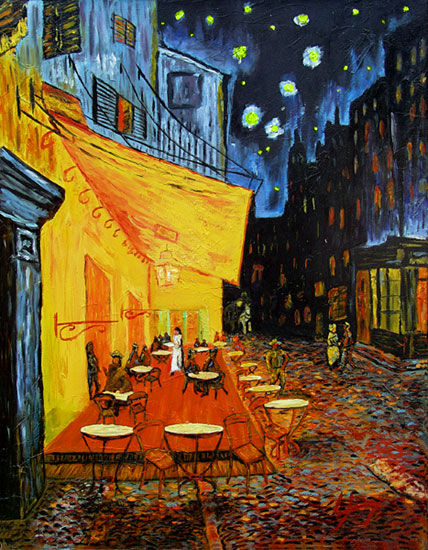As centuries continue and the complexities unravel, one artist peers through humanity in a sense of realization, or possibly in a pessimistic impression. Whether the intentions are negative or just simply the truth, humans are still captivated by his works of art. Chester Arnold’s paintings seem to speak of what we’ve committed, or what is to come in our fateful future using images of horrific mortalities and beautiful landscapes consumed by hellish array of colors breathing life into his masterpieces.
I first visited Chester Arnold’s exhibit, “Between Heaven and Earth” at the Nevada Museum of Art in Reno NV, carefully absorbing every work of art that I was exposed to while opening all five senses to full intake this beautiful phenomenon. Rows of large white walls staggered behind each other each possessing their own work of art. Each wall hung Arnold’s art progressively in a chronological order from early to present. Positioned around the staggering walls, circled other works of art somehow completing each piece very carefully. One piece in particular left me in a surreal hypnotic trance of wonder. Landscape With the fall of Icarus (1996), fused together with inspiration from the Greek mythological character of Icarus, the biblical epic tale of Tower of Babel, Pieter Brueghel the Elder’s sixteenth century visionary painting, and the progression of societal destruction¹. A towering mountainous vista climbing up to the heavens is succumbed with congested traffic in either direction. Miner’s climbing the side of a cliff in pursuit of dismantling the mountain. As told for generations, Icarus warned by his father not to fly too close to the sun in risk of melting the wax in which his wings were constructed of, forgetting the warnings, the wax melted and Icarus fell to his death into the sea below². According to Arnold, he illustrates a Cessna plane, seeing it violently crashing into the sea as Icarus did thousands of years ago. Do we too ignore warnings from our own environment? We are ignoring the very destruction that will lead us to our very own demise by abusing our natural surroundings through technologies leading to pollution. From oil spills to the amount of carbon being poured into our seas and air, Arnold proclaims the position of foretelling this horrific reality. Even in the biblical tale of Tower of Babel, creating technology that brings us closer to God. To reach the heavens, and build a massive structure that is a symbol that would keep culture united and powerful³. Yet, the closer we get to the heavens; we tend to play the role of God, in result, threatening human life with Weapons of Mass Destruction, and going to war with countries because they seem to have different ideals of democracy. It seems that as technology progresses, humans continue to build “Babel” higher into an unknown question that can further cause damage to humanity.
Arnold seemingly examines the fragile human mind as we seem to examine the fragile world that he created on canvas. I guess we will always be in question of why we are the way we’ve become. According the Ancient Greeks, we can fly too high and fall victim to our own technologies and greed. Or biblically speaking, we can fall to the collapsing role that we are required to adhere by. Yet, somehow, our own destination of truth will never fully approach this, or resolve these inquiries without first facing the scary truth of future events if we don’t stop and listen.
Work Cited:
1. Chester Arnold, On Earth as it is on Heaven, by Ann M. Wolfe and Colin M. Robertson
3. www.twopaths.com/story_TowerOfBable.html
